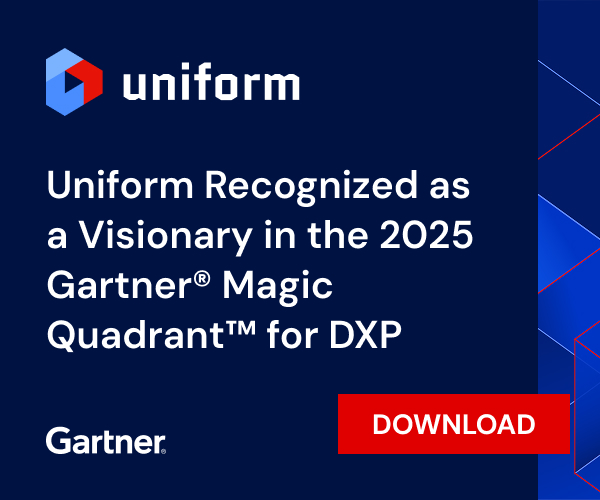Uniform blog/The power of reusability: 3 ways composable DXPs make scaling easy and affordable
The power of reusability: 3 ways composable DXPs make scaling easy and affordable
The power of reusability: 3 ways composable DXPs make scaling easy and affordable
Customers are constantly on the move and looking for brands that can keep up with their changing needs. To attract and retain their attention, you must deliver a consistent digital experience that resonates with their preferences and achieves your business goals.
However, achieving this feat requires scaling your content without comprising speed, quality, or your marketing budget.
With a composable DXP, you can save developers time, empower marketers, and improve speed to market with intuitive features such as reusable components.
From reducing costs to boosting content production, here are three ways this powerful capability, combined with composability, helps you overcome scaling challenges.
Reduce maintenance and licensing costs
Digital experiences are built based on content types. Essentially, they are templates for the content pieces (e.g., bios, product pages, online forms, etc.) that make up your site.
Typically, content management system (CMS) vendors limit the number of content types you can model on your website, mobile app, and other platforms, which in turn affects how you work in the CMS. This also limits features like personalization, which might require additional content types to handle the information you want to tailor for specific audiences.
What’s more, if you exceed the set number of content types, your licensing fees can rise exponentially.
Unlike a traditional or headless CMS, a composable DXP offers atomic components that can be replicated easily across channels, platforms, and sites. These are created and modified without code, eliminating the need to buy additional content types or integrate numerous systems into your CMS, saving developers and users valuable time.
Fewer integrations equal lower maintenance costs and simplify and streamline your digital experience production workflows, especially for brands that deliver experiences across multiple channels, platforms, and devices.
And instead of engineers building more content types, technical teams can focus on building cutting-edge capabilities that drive innovation.
Maintain brand consistency
In today’s fast-paced marketplace, the agility needed to pivot quickly with personalized experiences that meet customer expectations and reach revenue targets is critical.
If your CMS sources your content and powers your presentation layer, it’s likely your ability to share and reuse content amongst teams has degraded over time. With the content types as your starting point for unique and iterative content, you’re likely falling into one or more of the following cycles:
- In the rush to meet deadlines, you add more content types than you’ve contracted for, increasing your licensing fees.
- You end up with numerous content types dedicated to identical and similar front-end components.
- Without a DXP, brand inconsistency persists as siloes inhibit design systems and the collaboration of teams across locations.
In a composable DXP, your technical team defines and configures a unified content model, ensuring that all content is accurate, current, and accessible across your company. Engineers determine which components and services are available to marketers and other content creators and set governance rules at the platform level.
Using these pre-built components connected to different content and data sources in your technology stack, digital teams can build contextual experiences—from headlines to product descriptions—aligned with your brand’s tone, voice, and campaign.
In a composable DXP, everyone operates from a single source of truth, maintaining content consistency across the customer experience.
Improve flexibility in your content creation process
Flexibility is achieved in many ways with a composable DXP. First, it’s the heart of our atomic components. In a truly composable DXP, components are neutral in nature and leveraged structurally and visually by your creators. Any dependency on developer support ends once a component has been built.
By sharing atomic components across teams within your design system, you can control branding and content quality end to end. As a result, marketers can rapidly build pages–confidently utilizing content and data to populate approved components–improving overall productivity and speed to market.
Another key advantage is that it's multisource. From AI to a new CMS to a translation service, you can plug new tools into your marketing workspace without wasting time, money, and resources.
Composable DXPs offer plenty of flexibility for digital teams that need to move fast while streamlining operations, reducing inefficiencies, and maximizing return on investment.
Reuse content across channels and contexts with ease
To elevate your organization’s ability to manage and scale digital experiences, you need a solution that enables you to reuse cross-market content without duplication. A composable DXP like Uniform minimizes the need for code, unifies your content model, and ensures your digital experiences reflect a clear and consistent brand voice.
Request a demo today to discover how Uniform can help you simplify, accelerate, and scale content production across your organization.

Uniform Recognized as a Visionary in 2025 Gartner® Magic Quadrant™ for Digital Experience Platforms
Download






